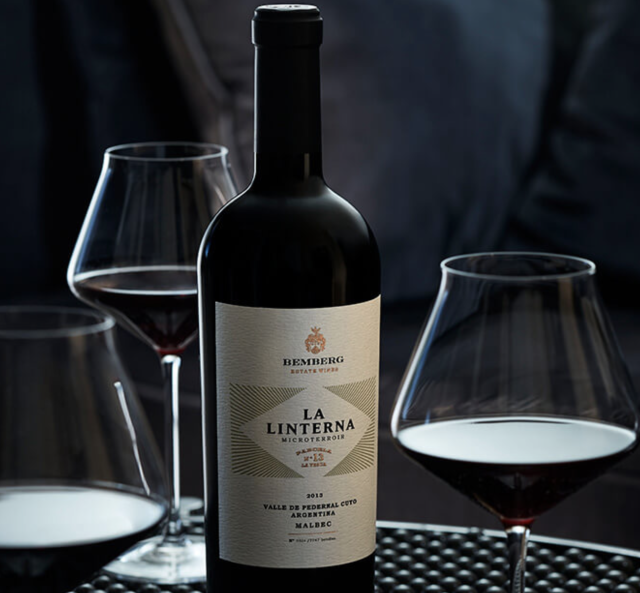This website uses cookies so that we can provide you with the best user experience possible. Cookie information is stored in your browser and performs functions such as recognising you when you return to our website and helping our team to understand which sections of the website you find most interesting and useful.
How can Argentina rival the world’s finest wines?
Leading Argentine winemaker Daniel Pi sets out his vision of the evolution required for this country’s wines to compete at the highest level.

Speaking to the drinks business as he unveiled new vintages from Argentina’s Bemberg Estate, Daniel Pi outlined the challenge for Argentina of creating wines that do more than offer “very strong value for money” at lower price points.
“Now we are moving a bit higher and trying to compete with the most prestigious places in the world,” he explained of Bemberg’s mission. “To play this game you have to be a little more refined.”
After almost 40 years working at Grupo Peñaflor, Argentina’s largest wine group, in 2021 Pi left to focus on Bemberg.
The portfolio – currently comprising six reds and one white – aims to show off the highest quality vineyard parcels across six estates belonging to Peñaflor’s owner the Bemberg family.
Although centred on Gualtallary in Uco Valley, the brand’s focus reaches 1,000km north to the Calchaquíes Valleys, where vines grow at 2,000m above sea level.
Pi highlighted several factors, both in the vineyard and cellar, which have already driven a considerable evolution in the Bemberg style since its inaugural 2013 vintage and look set to shape the brand’s development even further in future.
No malolactic
Introducing La Linterna Chardonnay 2018, Pi suggested that in the earliest years “for me, we cleaned the juice too much.”
With this 2018, he explained, “We are trying to find some reductive character, some people say mineral, so we’re going into fermentation with more turbidity.”
The 2018 Chardonnay also illustrates a shift in mindset towards fermentation vessel and harvest approach.
While initial expressions were fermented entirely in oak and the grapes picked in a single pass, the 2018 harvest took place in three phases with the first batch fermented in concrete eggs and undergoing no malolactic fermentation.
Bigger barrels
Of the portion still fermented in oak, Pi has dialled back use of 300-litre barrels in favour of 3,000-litre foudres and larger 500-litre barrels.
He confirmed a growing preference for the 500-litre format with his red wines too: from 2023 Bemberg’s La Linterna Malbec will also mature in 500-litre rather than 300-litre barrels.
“I like them more,” remarked Pi. “There’s better integration of oak and the amount of oxygen going into the barrel.”
This stylistic shift has not proved universally popular with some of Argentina’s most important export markets.
“Some people blame us because we are moving away from the traditional style,” acknowledged Pi, “especially the Brazilian and American customers because they prefer the oaky style, but I prefer these ones.”
Nevertheless, Pi rejected the idea of abandoning oak altogether. “Other people are more radical about saying ‘We won’t use any oak, just show the pure fruit’, he observed, “but I don’t think with this theory you can create wines that will last as long.”
Focus on ageability
Longevity is a major ambition for the Bemberg wines.
“Our main purpose is to have wine that will last 30 years,” stressed Pi.
This long-term outlook is reflected in the extended bottle age given to all expressions before release. Pi noted that this commitment proves problematic when submitting samples to those critics and magazines who insist on reviewing younger vintages.
“It’s a hand-sell,” he admitted.
Higher density plantings
One aspect that could shape the Bemberg style in future is a shift towards using fruit grown in vineyards planted at a far higher density.
Many of the producer’s more established vineyards were planted during the late 1990s in line with advice from consultants who favoured a planting density of 2,500-3,500 vines per hectare. However, Pi has become increasingly convinced by results from vineyards planted more recently at 8,000-11,000 vines per hectare.
“We are getting more concentration without losing finesse,” he reported.
Although full of experience and ideas about how Argentina can secure its reputation as a producer of top class wines, Pi praised the work of other producers.
“We are the new kids compared to our competitors who have been doing a very good job in terms of putting high quality Argentine wines on the map,” he stressed.
“A bunch of wineries are in the process of leading Argentina to another scale of quality. I feel happy to be part of this.”

